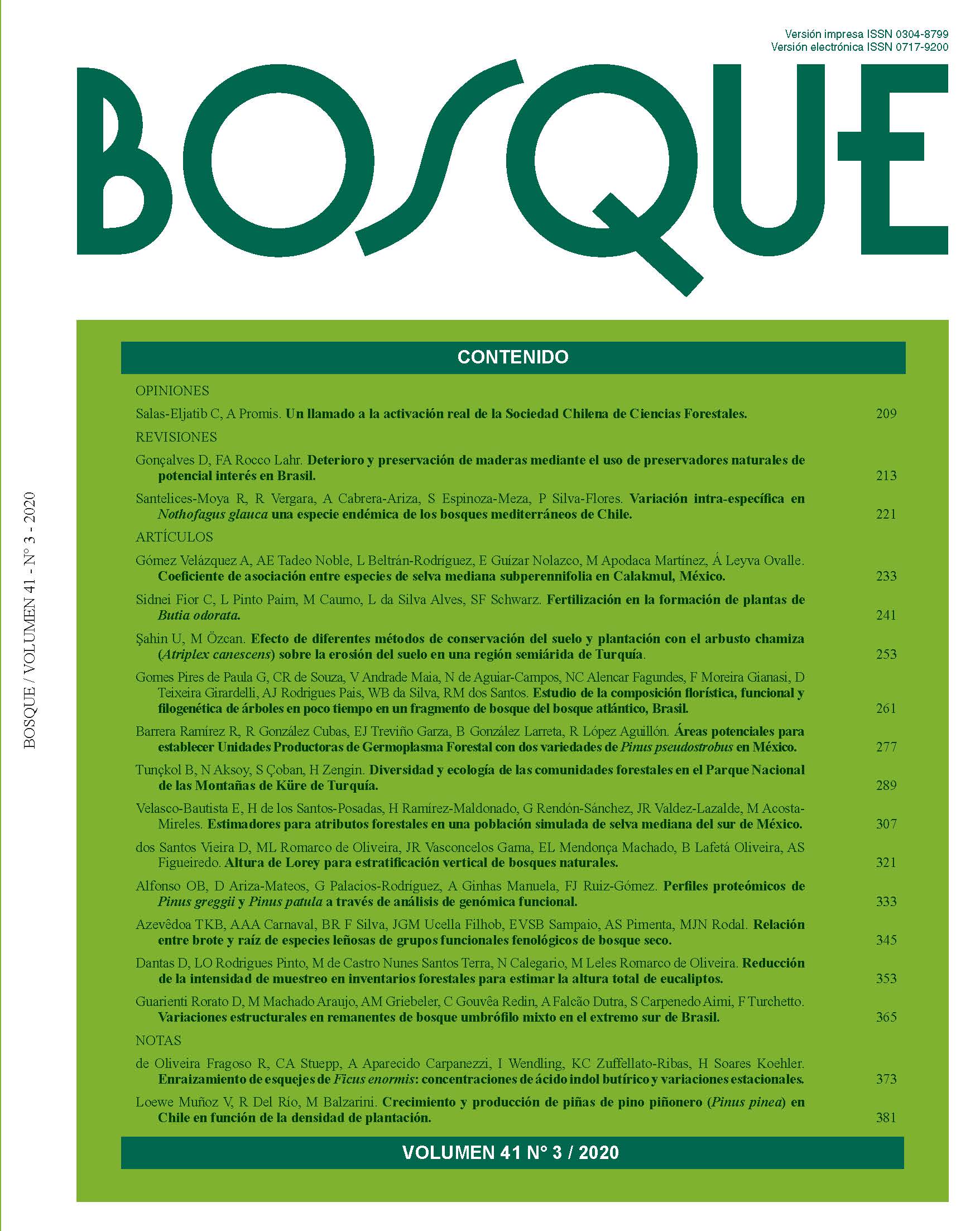Diversity and ecology of forest communities in Küre Mountains National Park of Turkey
Conteúdo do artigo principal
Resumo
This study aimed at analyzing the diversity and ecological characteristics of forest associations (121 relevés classified under eight associations) in Küre Mountains National Park. Ordination analyses (DCA and CCA) and response curves were used to reveal ecological characteristics of vegetation using soil parameters (pH, electrical conductivity, sand, clay and dust content, soil moisture) and topographical variables (altitude, slope, potential direct incident radiation and heat load). Ecological conditions of communities were also tested using average Ellenberg indicator values (EIVs). Among forest associations, the highest species diversity was found in Phillyreo latifoliae-Pinetum brutiae and the lowest diversity in Hedero-Castanetum sativae, which had a dense Rhododendron ponticum shrub layer. However, Salicio-Platanetum orientale and Buxo sempervirens-Carpinetum betuli had the highest beta diversity since they harbored unique species composition. Conditional effects of altitude, slope, pH and electrical conductivity, soil dust and sand content, sandy-loam and loam soil types presented significant contributions in species composition. While Carpino-Quercetum petraeae was found on soil with high dust content having high pH and electrical conductivity values, Quercetum roburi-Aceretum campestri and Salicio-Platanetum orientale were related to soil with loam. Species responses to soil and topographical variables varied for most tree species. Light EIVs, which has a high positive correlation with potential direct incident radiation and heat load, related to Phillyreo latifoliae-Pinetum brutiae and Salicio-Platanetum orientale. Riverside forest communities differed from other communities in nutrient and humidity EIVs. However, EIVs did not show a good correlation with associated soil parameters such as soil moisture-humidity EIVs and soil pH-acidity EIVs.

